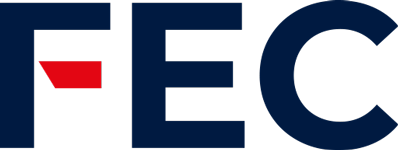We enjoy the opportunities we have to shepherd a damaged and deteriorated building through the entire process of investigation, design, and repair.
Our experts regularly practice their ability to communicate complicated technical issues with a non-technical audience. We have found this to be the single most valuable skill when clearing the fog.
The hours after a collapse, and the days after a major catastrophe, are chaotic at best. We understand the need for a practical balance between safety and progress.
We have the in-house capabilities to move efficiently from damage assessments to shoring and stabilization design to production of sealed permit drawings for structural repairs, maximizing value from our onsite investigations and expediting the path to recovery.
We are not a group of stereotypical ‘lone wolf’ forensic engineers; we are a close-knit pack of coyotes that prefers to take on big challenges together. We want to be part of something greater than ourselves and our own personal interests. The leaders in our team ‘own’ everything in their world—they waste no time looking for others to blame.
We are ‘always on’. We respect each others’ personal time, but when it is time to go, we move. We sacrifice comfort to take a call or travel in pre-dawn and midnight hours because we know our team members are doing the same.
We do not dabble in the core services we offer. This is our full-time pursuit; we don’t have other side gigs distracting us from providing the best quality service.
Technology is more than a tool for us; it is a hobby that consumes our nights and weekends. We believe the creative use of new technology will allow us to bring more value in less time on all projects ranging from the ultra-repetitive to the ‘one-offs’. We turn our expensive toys into tools that simultaneously improve the quality and speed of our field work.
For the most part, the forensic engineering service industry is still operating in the Stone Age with PDF reports being prepared manually with a decades-old word processor and data collection methods that date back to the era of film photography. We are redefining the processes and work products, looking toward the digital experiences already developed in parallel fields (e.g. social media, gaming, real estate).
Mother nature has a way of constantly surprising us in how she finds ways to literally destroy our buildings, especially when ‘creative’ construction methods are used. Almost anything can and will happen, and this presents countless opportunities to profit from poor communication about the facts, especially after catastrophes. We enforce honesty during our investigations by comprehensively documenting the evidence with precision.
We embrace our ethical obligation to provide our professional services with fairness and objectivity. Our technical opinions lose value if we are perceived to have a bias toward a solution or conclusion that is influenced by factors other than fact-based evidence, the scientific method, and construction industry standards.
Our services are commonly requested after a building has suffered distress. Mitigation efforts are always costly, and discussions regarding that cost are always delicate, sometimes hostile. We approach the conversation situation with humility; our interaction with all parties is oriented toward the positives of assisting, repairing, and improving.
We are not aloof ivory tower academics disconnected from the practicalities of real-world construction. We deeply respect the knowledge gained from years in the field, and we value opportunities to humbly interact with and learn from experienced tradesmen and maintenance personnel.
“Does it make sense?” This is the question we ask. Moving with purposeful speed means filling all moments with pragmatic action. We conduct our investigations sensibly and realistically, prioritizing practical over theoretical considerations. Empirical measurements and careful real-world observations are the strongest evidence in an investigation.
Inspiration is drawn from high-tempo military tactics. When we are in the field we are in a race to collect as much quality information as we can, and when we’re in the office we regularly reconsider whether our work product is too much, too little, or just right in relation to our client’s needs, while always keeping an eye on the deadlines and budget.
We provide useful, accurate advice regarding the origin and cause of the loss, as well as the extent of damage and conceptual repairs before our feet leave the site. We call this zero-day turnaround – it’s our obsession.






